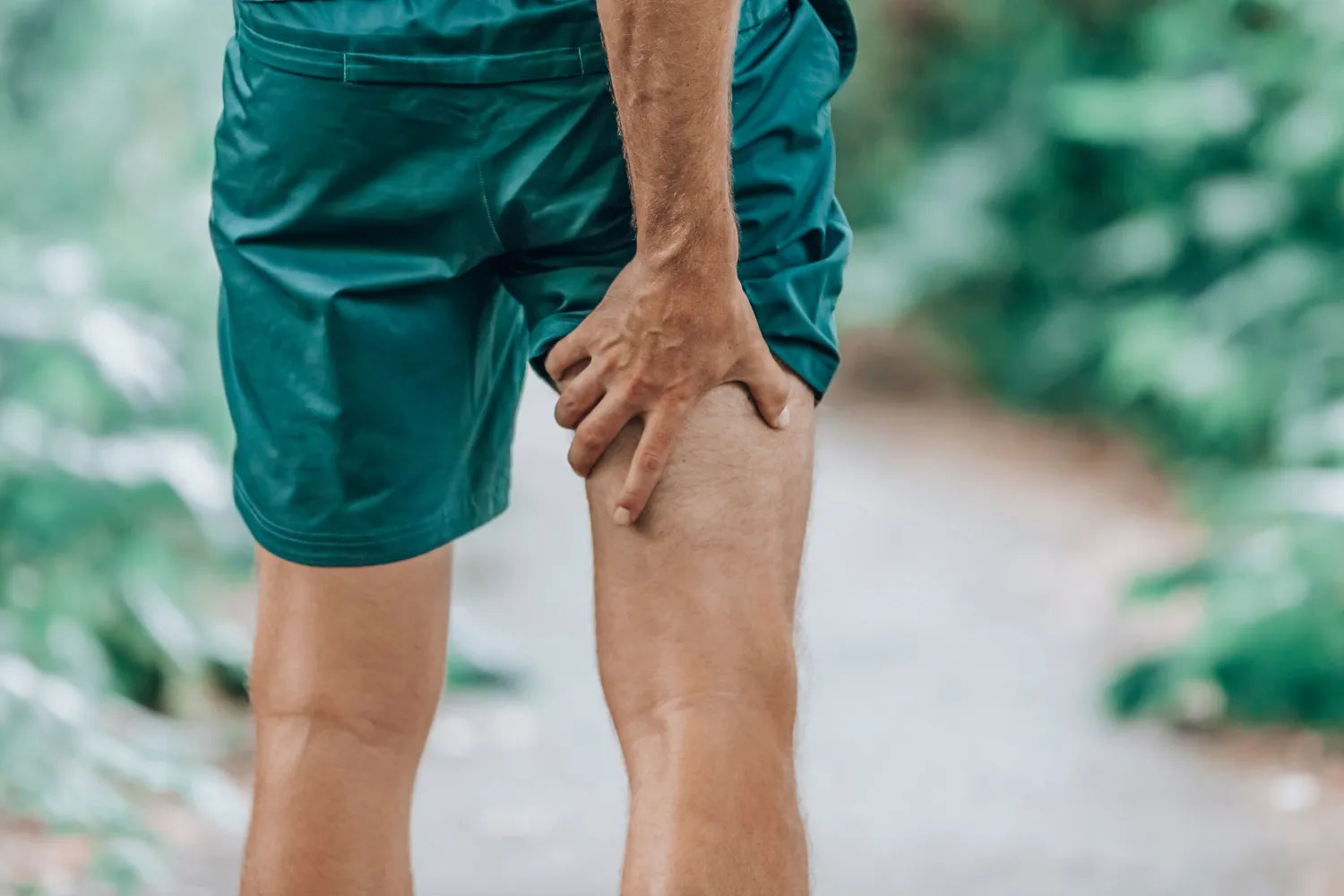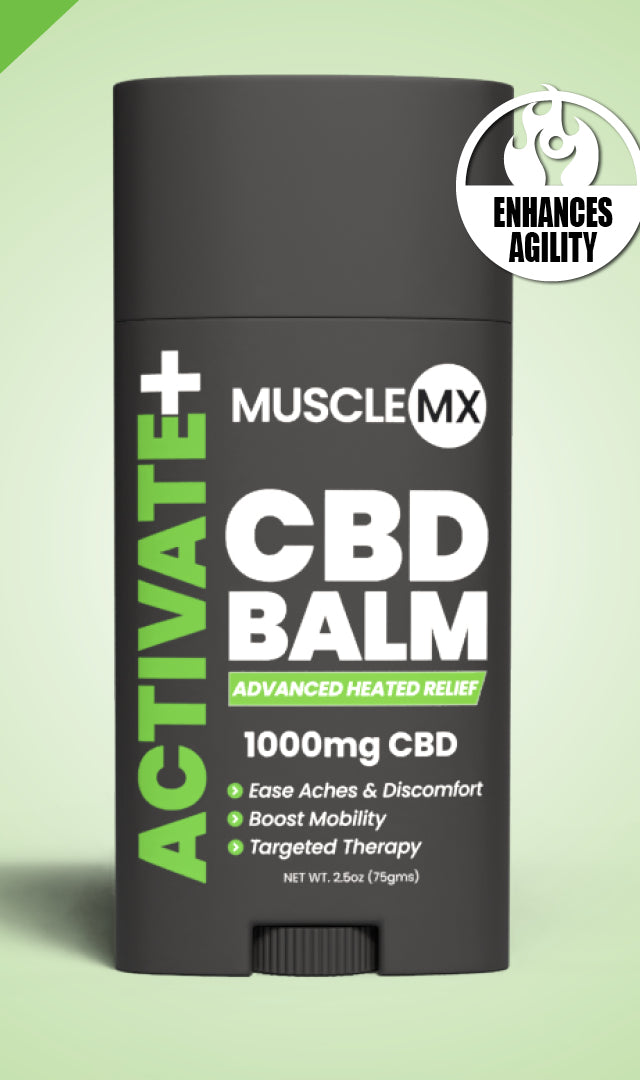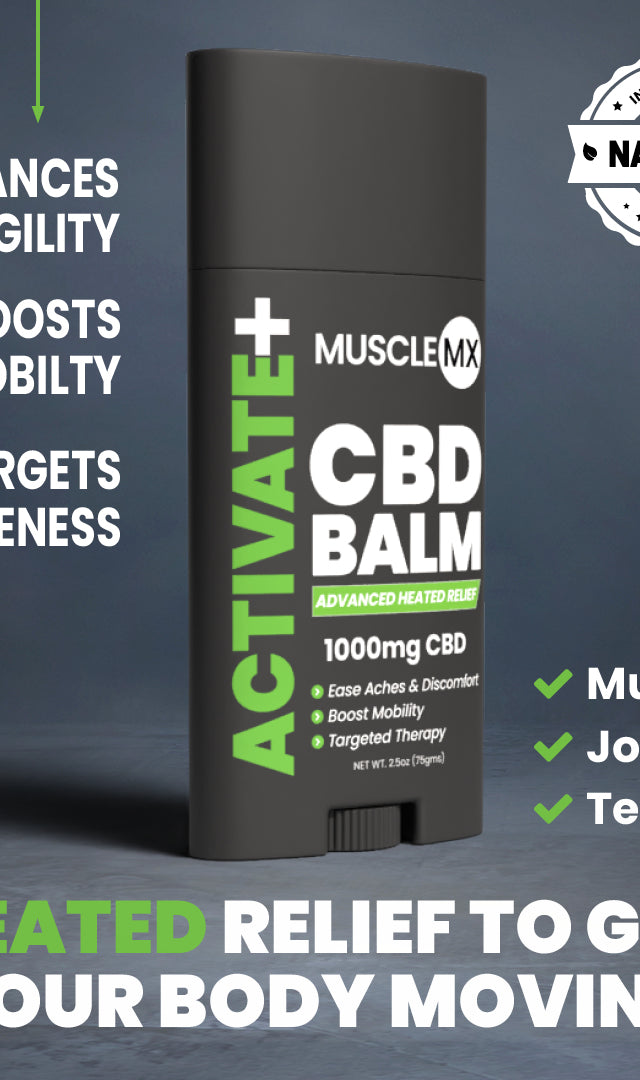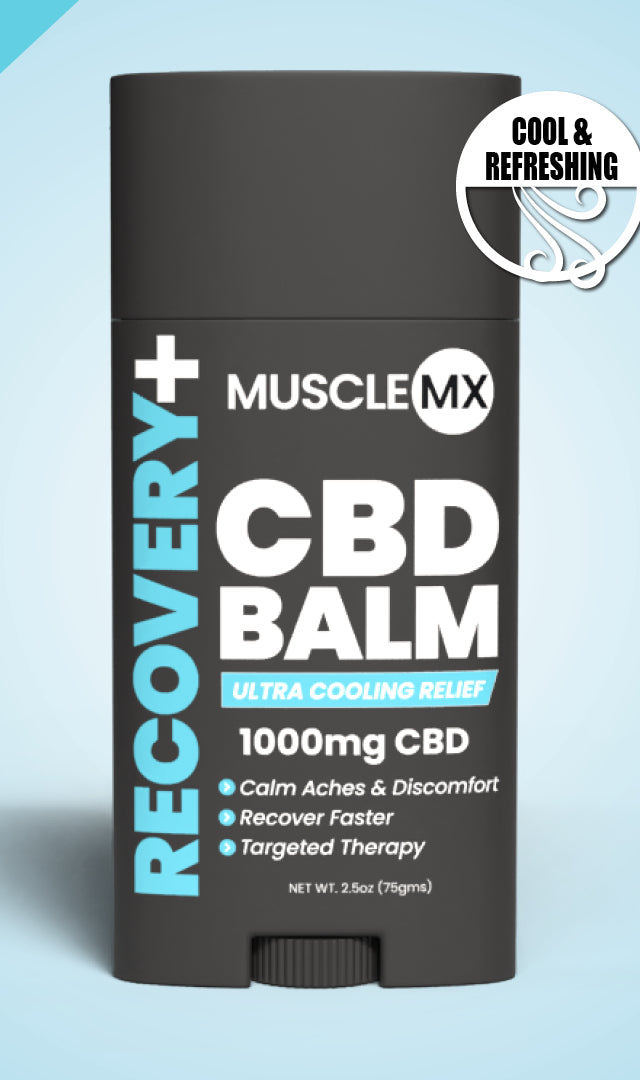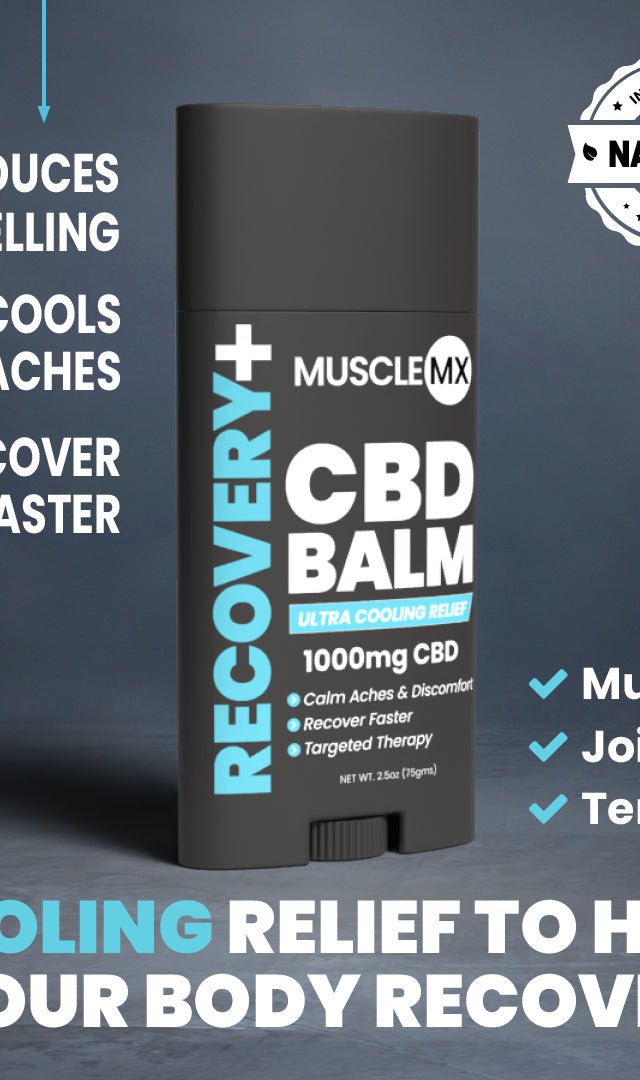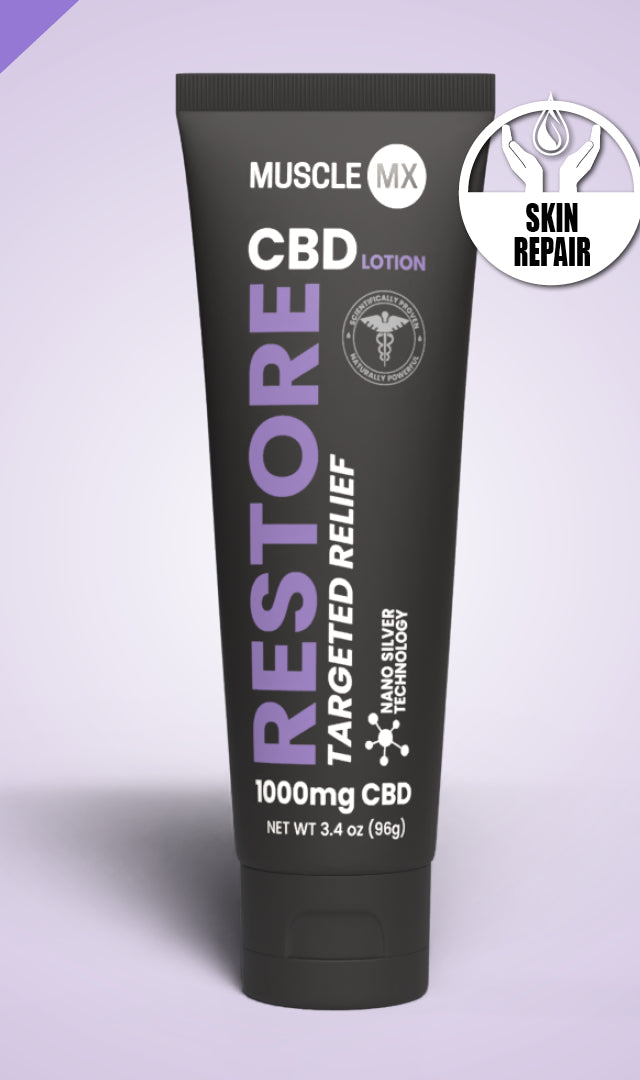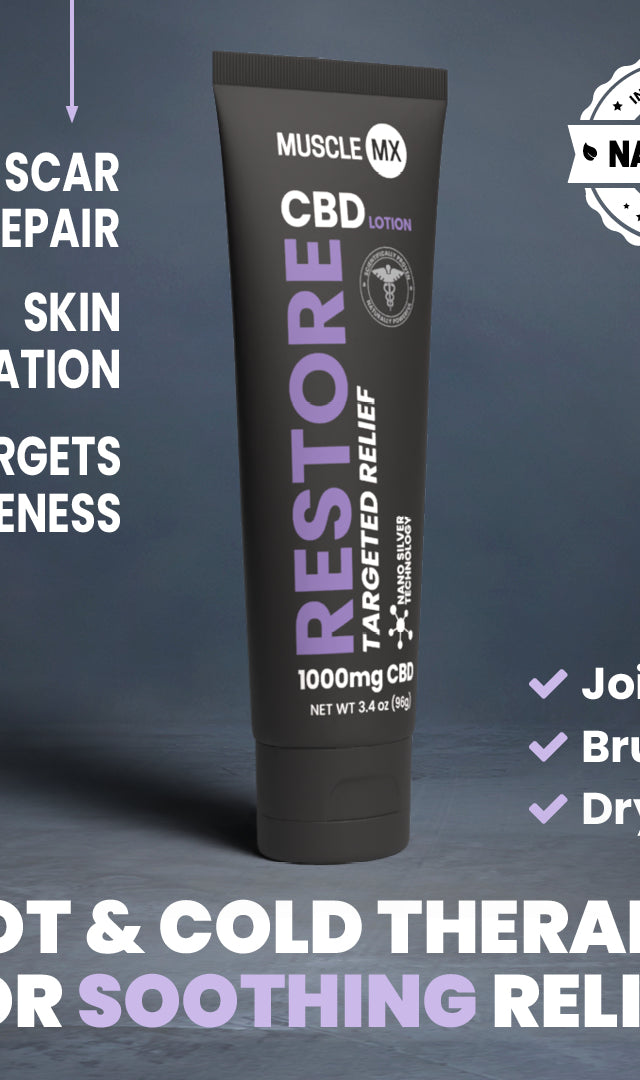8 Ways To Relieve Sore Hamstrings
Taking care of your body is vital to maintaining an active lifestyle, and your hamstring muscles play a big part in that. These muscles are often underappreciated — until they start to feel sore.
Whether you're an avid runner, a gym enthusiast, or someone who enjoys a leisurely walk, you've likely experienced this discomfort in the back of your thigh. Hamstring soreness is common, but with the right knowledge and care, it doesn't need to disrupt your activities.
We'll guide you through understanding your hamstring muscles, why they might feel sore, and what you can do to help alleviate the discomfort. Let's get on the road to healthier, happier hamstrings.
What Are Hamstring Muscles?
The term "hamstrings" refers to a group of three muscles located at the back of your thigh: The biceps femoris, semitendinosus, and semimembranosus. These muscles work in harmony, enabling you to bend your knee and extend your hip — essential actions for walking, running, and jumping.
The hamstrings are key players in your day-to-day mobility. They contribute to activities as diverse as kicking a soccer ball, sprinting for a bus, or simply stepping over an obstacle. Understanding these muscles is the first step toward keeping them in good shape and ensuring they can support your active lifestyle.
What Can Cause Sore Hamstrings?
Soreness in the hamstrings can occur for a variety of reasons. You might have been pushing your limits in sprinting or overdoing it at the gym. Activities like these can lead to muscle strain or even a pulled hamstring, which can cause discomfort in the back of your thigh.
Hamstring injuries are common, particularly in sports that involve a lot of running or sudden movements. In more severe cases, the muscle fibers can tear, leading to sharp or intense pain. While some muscle soreness after a workout is normal, severe pain indicates something might be wrong.
If you're experiencing intense pain, it's important to seek medical advice. Ignoring the pain or trying to push through it isn't the solution. Your health and well-being are paramount, so if your hamstrings are signaling distress, giving them the attention and care they need is very important.
What Are the Symptoms of Hamstring Strain?
Recognizing the symptoms of a hamstring strain is the first step to recovery. The symptoms can vary in intensity but often include a sharp pain in the back of your thigh, tight hamstrings that limit your range of motion, or a constant dull ache. These symptoms can make activities like walking or bending your knee uncomfortable.
It's essential to understand the type of injury you're dealing with. A minor strain might require rest and self-care, while a severe muscle tear could require professional medical intervention. Don't underestimate the importance of a correct diagnosis. It's the key to a tailored and effective treatment plan.
If your symptoms persist or are severe, it's time to consult a healthcare provider or a sports medicine specialist. They can thoroughly examine and diagnose your injury's severity and guide you on the appropriate course of action. Remember, it's better to seek help sooner rather than later when it comes to your health.
What Are Some Tips To Help Relieve Sore Hamstrings?
There are several methods to help relieve sore hamstrings. Here's a breakdown of some of the most effective strategies.
1. RICE Method
The RICE method, which stands for rest, ice, compression, and elevation, is a simple self-care technique that can help relieve pain and reduce swelling.
Rest involves taking a break from the activities that cause hamstring pain. Ice can be applied using a cold pack for 15-20 minutes every two to three hours. Compression involves wrapping the area with an elastic bandage to provide support and prevent swelling. Finally, elevation involves raising your leg above the level of your heart to help reduce swelling.
2. Don't Skip Out on Stretching
Taking the time to properly warm up before any physical activity is essential. A good warm-up, including hamstring stretches and strengthening exercises for your hamstrings, quadriceps, and glutes, can prepare your muscles for the work ahead and help prevent injuries.
In addition to a good warm-up, consider incorporating strengthening exercises into your routine. Strengthening these muscle groups can support your hamstrings, reducing the risk of future strain.
3. OTC Medication
Over-the-counter (OTC) medications, particularly non-steroidal anti-inflammatory drugs (NSAIDs) like ibuprofen and acetaminophen, can help manage pain and reduce inflammation. These medications block the production of certain body chemicals that cause inflammation.
While these medications can be effective, they may not be suitable for everyone. Some people may experience side effects or have sensitivities to these medications. In some cases, they can cause stomach and liver issues.
Always consult with a healthcare professional before starting any new medication.
4. Physical Therapy
Physical therapy is a powerful tool in the treatment of hamstring strains. It's about more than just treating the symptoms. A good physical therapy program can address the root cause of your discomfort, helping prevent future injuries and promote overall wellness.
A physical therapist can design an individualized treatment plan tailored to your specific needs and fitness level. This could involve various techniques, from targeted exercises to improve strength and flexibility to advice on modifying your workout routine to protect your hamstrings.
Physical therapy can also play a role in restoring range of motion. Hamstring strains can leave your muscles feeling tight and make moving uncomfortable. A physical therapist can guide you through exercises and stretches that gradually increase your range of motion, helping you return to your regular activities.
5. Using a Foam Roller for Hamstring Relief
Foam rolling, also known as self-myofascial release, is a technique that uses a foam roller to apply pressure to specific areas of your body. It's like giving yourself a deep tissue massage — a bit of self-care that can do wonders for sore hamstrings.
Foam rolling has several benefits for sore hamstrings. It can improve blood flow to the area, speeding up recovery and helping to relieve tight muscles. By breaking up knots in the muscle tissue, foam rolling can help to reduce discomfort and increase flexibility.
Using a foam roller on the hamstrings is simple. Position the foam roller under your thighs and use your hands and feet to control the pressure as you slowly roll from the back of your knee up to your buttocks. Spend extra time on any spots that feel particularly tight or sore.
Remember, while it might be uncomfortable, it shouldn't be painful. If it hurts, ease up on the pressure or stop and consult with a healthcare professional.
6. Preventing Tight Muscles and Overuse
Preventing hamstring soreness starts with taking care of your muscles. Regular physical activity is a great way to maintain muscle health. It keeps your muscles strong and flexible, reducing the risk of strains and pulls.
It's equally important to listen to your body and not to overexert yourself. Rest is just as important as exercise in maintaining muscle health.
To prevent overuse, mix up your workouts and give your hamstrings a break. If you're a runner, try swimming or cycling for a change. Remember, balance is key. Your body will thank you for it.
7. Consider Your Nutrition
Food plays a significant role in muscle recovery. Certain nutrients can naturally support your muscles and help ease soreness. For instance, protein is essential for muscle repair, while vitamins and minerals like vitamin C, zinc, and magnesium can aid in muscle recovery and help to ease soreness.
Try incorporating foods rich in these nutrients into your diet. Lean meats, dairy, and eggs are excellent sources of protein. Citrus fruits, berries, and bell peppers are packed with vitamin C. Nuts, seeds, and whole grains are high in magnesium and zinc.
Good nutrition is essential to maintaining muscle health and speeding up recovery. So, fuel your body with the right foods, and it'll repay you with better performance and quicker recovery.
8. Try CBD
CBD, or cannabidiol, is a natural compound that can support muscle recovery and ease feelings of discomfort. It works by interacting with the body's endocannabinoid system (ECS), a complex system that plays a key role in maintaining balance in the body.
The ECS has receptors throughout the body, including in the muscles. CBD can interact with these receptors, helping to maintain a healthy ECS and support the body's natural recovery processes.
While CBD won't replace a healthy lifestyle or a well-rounded recovery plan, it can be a valuable addition to your routine. As always, it's important to consult with a healthcare professional before starting any new supplement, including CBD.
What Is the Best Type of CBD For Hamstring Soreness?
When choosing a CBD product for hamstring soreness, you have several options. Gummies, oils, and topicals each have their own benefits. Gummies and oils are ingested, supporting your body's endocannabinoid system overall. However, topicals might be your best bet if you're looking for quick, targeted support.
CBD topicals are typically used for localized discomfort because they can be applied directly to the source. They work by interacting with the cannabinoid receptors throughout your muscles, providing a direct route to easing feelings of discomfort.
Our CBD balms, like our CBD Recovery Balm, are a perfect example of a topical designed with your muscle health in mind. This balm pairs broad-spectrum CBD with menthol and peppermint oil, creating a cooling effect perfect for post-workout soreness and temporary discomfort support. It's like a breath of fresh air for your hamstrings.
When Should You Seek a Healthcare Professional?
While self-care methods and products like CBD can help manage minor hamstring soreness, it's essential to recognize when your discomfort might indicate a more serious issue. If your pain is severe, persists even after rest and self-care, or is accompanied by swelling or bruising, it's time to seek a healthcare professional.
Whether you consult with a healthcare professional or an orthopedic specialist, taking their advice seriously is important. Ignoring persistent pain can lead to more serious complications down the line. It's not just about dealing with the discomfort — it's about taking care of your overall health.
The Bottom Line
Caring for your hamstring muscles is essential for maintaining an active and comfortable lifestyle. Regular physical activity, proper warm-up and strengthening exercises, and listening to your body can all help keep your hamstrings happy.
However, don’t forget that professional help is available when you need it. Don't hesitate to seek medical advice if your hamstring discomfort is severe or persists.
To up your comfort game and support you in your wellness goals, explore our full range of natural, third-party tested CBD products at Muscle MX. We're here to support you every step of your journey to wellness.
Sources:
Hamstring Muscles: Location, Anatomy & Function | Cleveland Clinic
Hamstring injury - Symptoms and causes | Mayo Clinic
6 Easy Ways to Stretch Tight Hamstrings | Very Well Fit
Nutrition and Muscle Recovery | PMC





































